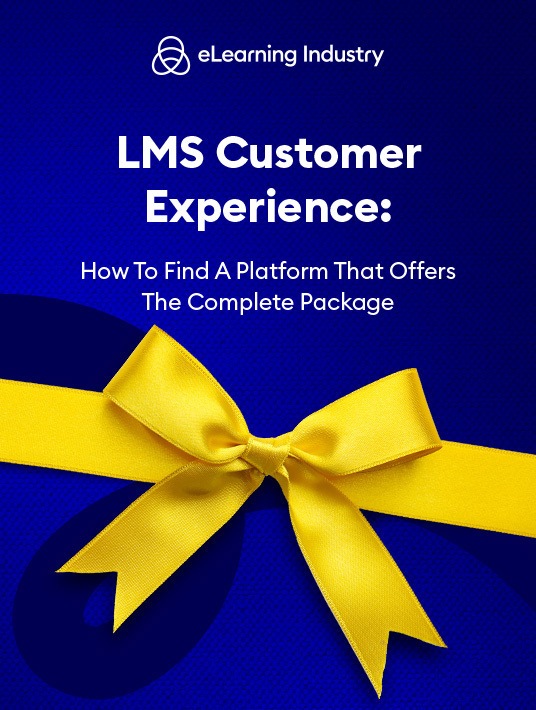6 Key Questions To Ask To Identify Your LMS Expectations Before Purchasing A New Platform
With so many platforms to choose from, you need to start the LMS selection process with firm footing, knowing exactly what you need from the system and how it can help you achieve your training objectives. How can an LMS possibly live up to your expectations if you don’t first define them? Here are 6 key questions to ask in order to gauge your LMS expectations before purchasing an LMS.

1. What Level Of Support Services Do You Really Need?
There are two crucial parts to this question. The first is that you must determine which support services your team needs to get the most from the LMS platform. The second is to figure out how much you’re willing to spend for those services, as well as differentiating the needs from the wants. For example, do you expect your LMS vendor to provide one-on-one tech support round the clock? Or is an online FAQ sufficient for your team? If you do require more advanced services, are they included in the package or do you need to pay extra? Another support option to consider is the online user community. Do users post tips and tricks on their social media page or forum?
2. Which LMS Features Or Functions Are The Top On Your Priority List?
You probably have a list of LMS features that you absolutely need in order to warrant the LMS investment, such as custom reports or gamification support. These LMS features and functions can help you narrow the choices and identify which Learning Management Systems fit the bill instead of investing in an LMS only to discover that it lacks crucial functions your team requires. A great way to evaluate all the features an LMS has to offer is through an online directory, which allows you to review their unique selling points at a glance. For instance, whether they offer more advanced support options or which security measures they have in place.
3. What Is Lacking From Your Current LMS?
Your organization should already have a firm grasp of your current platform’s shortcomings, as well as where your online training program needs to improve in order to enhance on-the-job performance. Evaluate LMS metrics, conduct surveys and carry out a training needs analysis beforehand. This gives you a good indication of what is lacking from your current Learning Management System so that you can set your LMS expectations and find a suitable replacement that offers superior LMS customer experience. For example, the existing LMS platform isn’t multiplatform-friendly. Thus, you may need a responsive LMS that caters to your modern, mobile workforce.
4. What Does Your Team Require From The New LMS?
Your L&D department must be able to effectively utilize the new LMS to deliver online training courses. As such, you need to determine what your team requires from the new LMS in order to fulfill their job duties. For instance, admins need to quickly access LMS reports and assign user roles. But it goes beyond features. The new LMS platform should be flexible and intuitive for every member of your staff, including corporate learners. Thus, it must be user-friendly and align with their skill sets and talents. Involve them in the LMS selection process early on to get their feedback. Conduct surveys and evaluations to determine their level of tech-savviness. In addition, ask them what they like best and least about your current LMS platform to avoid repeating the same mistake.
5. How Does The LMS Fit Into Your Overall L&D Strategy?
Identifying the use case of your new LMS is essential to identifying your LMS expectations. You must determine how the system fits into your L&D strategy and what purpose it serves, as well as how it’s going to help you achieve your goals and objectives. Be specific. Set measurable outcomes so that you know which LMS aligns with your needs. For example, clarify who will be using the LMS, why, and how frequently. Will you still be incorporating ILT sessions into your training strategy? In which case, you need to determine whether the LMS is solely for supplemental training and tracking.
6. What Is Your Definition Of Superior Customer Service?
Different organizations have different requirements and expectations when investing in an LMS. But you must first define what "superior" customer service means to you and then weigh your LMS expectations against the LMS vendor’s offerings and track record. For example, you might expect the LMS vendor to reply to trouble tickets or emails within an hour or to walk you through every step of the setup process once you sign on the dotted line. In which case, you need to look for an LMS vendor that has the experience, expertise, and high level of customer care that you expect. Of course, the next question is: Can you afford those advanced options or will you have to settle for more basic services?
One of the most common mistakes that organizations make when choosing an LMS is setting the bar too high. Especially those that are making the switch from traditional training and aren’t familiar with LMS features and specs. A great way to set realistic LMS expectations is to schedule a meeting with your top choices to see how they can help you bridge training gaps. You can also test drive the tool with an LMS free trial or demo to determine what’s on the market today. For instance, which support options or features usually come with the package. Use this article as a guide to identify your LMS expectations and set realistic standards before investing in a new Learning Management System.
What are the warning signs that you should look for in your current LMS before deciding to buy a new one? Are your top LMS choices going to deliver the superior customer experience you deserve? Download our free eBook LMS Customer Experience: How To Find A Platform That Offers The Complete Package to discover the top benefits of owning an LMS that delivers a superior customer experience. It also features tips to vet the LMS vendors and use online ratings and reviews to find the ideal system for your organization, as well as tips to evaluate the LMS customer experience during your next LMS free trial or demo.







